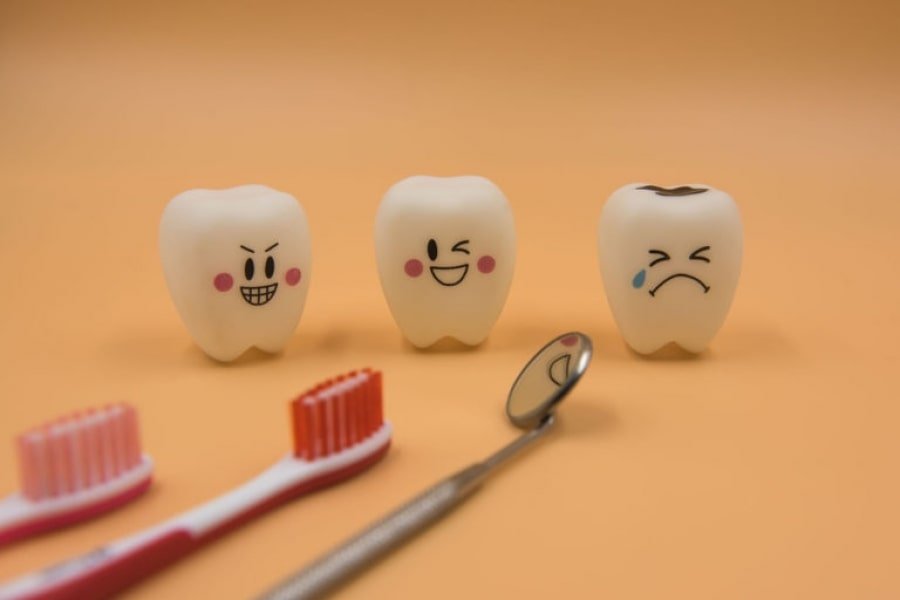Why Do Teeth Rot Decay?
- Istanbul Dental Clinlc
- Why Do Teeth Rot Decay?

Why Do Teeth Rot Decay?
Tooth decay is the destruction of the enamel, which is the hard tissue of the tooth, the dentin under it and sometimes the hard tissue covering the root surface. It usually occurs when carbohydrate foods (sugar, starch, etc.), cola and similar sugary carbonated drinks, cakes, chocolate, etc. especially sticky foods remain on the tooth surface for a long time. The bacteria in the mouth feed on these food residues and acid is produced with the help of these microorganisms. After a while, this acidic environment causes destruction in the hard tissues of the tooth and forms dental caries. Bacterial plaque consisting of bacteria in the mouth can form acid from the residues of sugary and floury foods left in the mouth. These acids dissolve the mineral tissue of the teeth, causing the enamel of the tooth to deteriorate and ultimately the onset of dental caries and the cavity of the dentists. They cause the cavities they call cavities.
Who Gets More Dental Caries?
Since cavities are formed as a result of the meeting of sugary and floury foods and bacteria, there is a danger for everyone. However, those who have a very high proportion of carbohydrate and sugary foods in their diet are in much more danger of caries if the fluoride rate in their water is very low. Saliva is a natural antacid against the acid produced by bacterial plaque.
Although it creates a defence mechanism, it cannot prevent caries alone. Diseases or medications that reduce the flow and amount of saliva also accelerate the formation of caries.
Can tooth decay be prevented?
Yes.
Brushing the teeth in the morning after breakfast and before going to bed in the evening and regular use of dental floss every day is the most effective way. Since food residues accumulate mostly in the recesses on the chewing surfaces of the teeth and on the interfaces where the teeth touch each other, a suitable toothbrush should be selected. Trying to consume sugary foods at main meals and trying not to eat anything between meals is another measure. Regular dental check-ups should be carried out at regular intervals to catch caries at an early stage. is the best way.
Importance of Milk Teeth:
The teeth in the mouth are in two groups as milk and permanent teeth. Milk teeth are 20 in total and permanent teeth are 32. In the society, there is sometimes a misconception that milk teeth are unnecessary. The main reason for this misconception is that deciduous teeth fall out and permanent teeth will replace them. However, milk teeth undertake many tasks while they are in the mouth. The period when deciduous teeth are in the mouth coincides with the most active period of growth and development in childhood. Milk teeth, which constitute the first step of the digestive system with their cutting and grinding functions, affect nutrition and accordingly growth and development. In other words, they have natural placeholder functions.
Milk Tooth Traumas: Milk tooth traumas are often seen in the preschool period, especially in young children due to difficulties in maintaining their balance. Studies show that the incidence varies between 11% and 30%. It has been reported that the large differences in these rates are due to the low rate of physician referral. At the ages of 1 to 3 years, the incidence increases in direct proportion to the increase in physical activity. Boys are more affected. It has been found that the incidence of trauma in permanent teeth is 22% and it is frequently seen between the ages of 8 and 11.
Milk Tooth Trauma Treatments: The time of the incident affects the amount of tooth trauma and the treatment plan. The location of the incident is important in terms of tetanus prophylaxis. In order to protect from the possible damages of dental traumas, regardless of the type and size of the trauma, if there is no problem related to the general health status such as loss of consciousness, bleeding, loss of balance, headache, vomiting, nausea, speech difficulties, etc., a dentist, if possible a paediatric dentist, should be consulted as soon as possible.
What should be done to prevent milk tooth trauma: The first duty of families and people who take care of children is to be prepared for dental trauma. This preparation includes knowing what to do in case of emergency and determining the physician to be contacted. In addition, children should be provided with mouth protective apparatus and helmets when doing sports, belts and seats in the car, and environments where they cannot fall at home. The time between the trauma and the visit to the dentist is the first reason affecting the success of the treatment. If the tooth is broken and the broken piece can be found, the broken piece should be immediately placed in a milk and the dentist should be consulted as soon as possible (within the first 1 hour).
Tooth wear
Throughout life, our teeth are exposed to many chemical and physical factors. As a result, tooth decay, trauma and abrasion may occur. Dental abrasions include abrasion, attrition, abfraction and erosion. Atrision is defined as physiological abrasion that occurs in the areas where the teeth are in contact, without any substance in between, in functional or non-functional movements. Abrasion is tooth wear caused by the contact of foreign objects with teeth in the mouth. Abfraction is a wedge-shaped lesion caused by the tensile forces created by non-centric occlusal forces in the collar region. Erosion is defined as the loss of tooth tissue caused by acids entering the mouth without physical or microbial effect.
Gingival Diseases (Periodontal Diseases) :
Periodontal diseases are inflammatory diseases affecting the gums and other tissues supporting the teeth. Periodontal diseases are responsible for 70% of tooth loss in adults. When these diseases are diagnosed early, they can be treated easily and successfully. Periodontal diseases start with gingivitis (gingivitis). In other words, gingivitis is the early stage of periodontal disease. In this period, the gums are bleeding, red and enlarged in volume. It may not cause much discomfort in the early period. If left untreated, the disease may progress to periodontitis and cause irreversible damage to the gums and jaw bone supporting the teeth. Periodontitis is a more advanced stage of periodontal disease. The jawbone is damaged along with other tissues supporting the teeth. As the disease progresses, the teeth begin to wobble. starts, may even go to the shoot.
Contact Us
You can contact us to get more detailed information about our treatments or you can send your questions to us via the contact form.
+38 220 334 087
City Kvart, Radoja Dakica Lamela 17/5 No:2 Podgorica Montenegro
Treatments
- Implant Treatment
- Personalized Implant
- Oral Diagnosis And Radiology
- T.M.J / Jaw Joint
- Cyst Operations (Surgery)
- Tooth Extraction
- Wisdom Teeth Extraction
- Smile Design
- Aesthetic Fillings (Composite)
- Laminate Veneers
- Zirconium Crowns
- Prosthetic Dentistry
- Orthodontics / Braces Treatment
- Teeth Whitening (Bleaching)
- Root Canal Treatment / Endodontics
- Gum Treatment (Periodontology)
- Pediatric Dentistry (Pedodontics)
- Orthodontics / Braces Treatment
- Prosthetic Dentistry
 English
English Türkçe
Türkçe